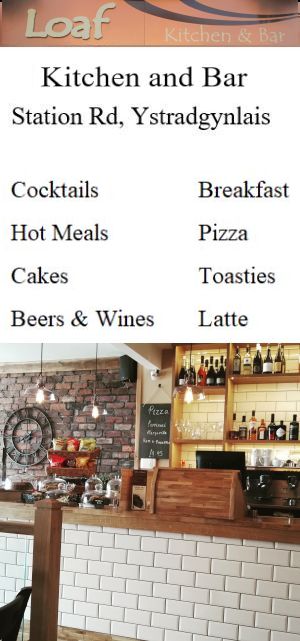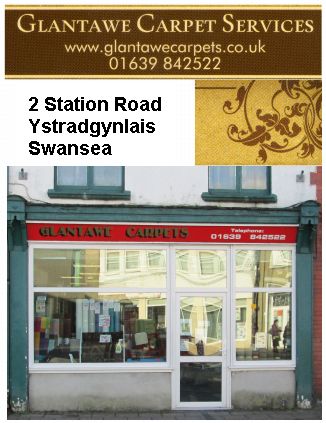Ystalyfera
History and Heritage
The Centenary of Jerusalem Chapel
The South Wales Voice 13th December 1957 had a large feature on an important landmark in the history of Jerusalem Chapel, Ystalyfera when its centenary was celebrated.
YSTALYFERA METHODISTS REMEMBER PIONEERS
OF 100 YEARS AGO
An important landmark was reached recently in the history of Jerusalem Methodist Chapel Ystalyfera, when its centenary was celebrated by a special service presided over by the minister, the Rev Hugh Llewelyn Jones.
Despite the weather a large congregation gathered together with representatives of local churches of all denominations.
Members of the Sunday school opened the service. Lloyd Davies and Colin Jones read portions of the Scriptures and Hugh Jones gave out in; then Dorothy Hughes and Charlotte Davies offered a prayer each.
In the unavoidable absence through illness of the church as secretary, Mr Emrys Williams, Mr Jones then read an account of the Church's history compiled by Mr Williams: below are some excerpts.
Established in 1857, the church was for many years without a minister and for some reason or other, no statistics from then until 1881 are available but it is known that despite very hard times during that period when they could only pay a preacher from 10 shillings to 15 shillings for a Sunday, and afterwards, the Church continue to prosper.
During that time a soup kitchen for local people was opened on the premises and in 1894 the Chapel joined Caersalem Baptist Church in ways and means of carrying out the work of both Churches. Mr Studts, proprietor of the Fair Amusements agreed to hand over the proceeds of an evening's entertainment to their funds.
The officers who organised this event in September 1894 with the late Mr David Lloyd, Jerusalem, as chairman and Mr Rees Bowen Rees asylum as secretary of the joint committee; the Presbytery also gave £100 to relieve hardship among the members.
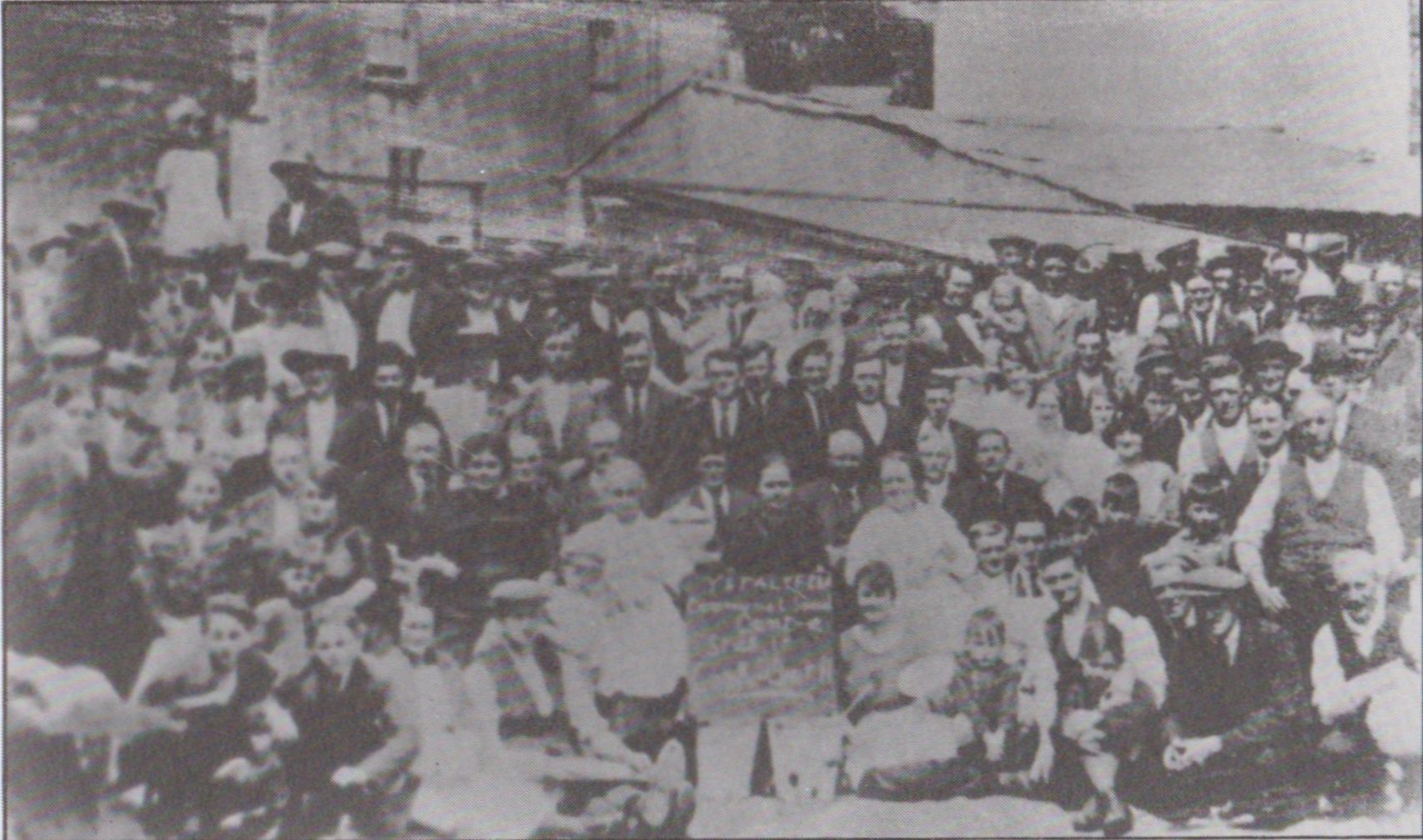
The Ystalyfera Communal Kitchen Workers during the 1926 strike, and those who received their mid-day meal at this centre.
Photograph from Bernant Hughes' book
A typical menu at the soup kitchen was:-
Meat and Lentil stew
Pea soup and bread
Roast potatoes
Bread butter and cheese
Bread and jam to follow
Meat stew potatoes onion and bread
Baked potatoes
Boiled whole onions
Brown gravy
Bread and butter
The first Minister was the late Rev John Jeffries who took office in 1884 and was succeeded by the Rev J Ivor Jenkins in 1902 and he in turn was followed in 1914 by the Rev D W Stephens. Then in 1928 the late Rev D R Beynon began a ministry which lasted until his death in 1953; then Rev D T Davies in 1954 began a rather short ministry and in July 1957 was succeeded by the present minister whose previous pastorate was at Cilgerran Pembrokeshire.
SERVED FOR 75 YEARS
The first deacons were the late David Jefferies, David Gape, John Walters and Hopkin Powell, father of Mr H J Powell JP who together with his father has served an uninterrupted period of 75 years as treasurers of the Church.
In 1895 Rees Vaughan, Thomas Thomas, David Davies, Richard Owen and Rhys W Hopkin were elected deacons, the latter serving as secretary of the Church were nearly 60 years until his death in 1950.
In 1914, seven new deacons were chosen: William Lloyd, D T Williams, Henry Gape, William Jeffreys, Griff Griffiths, H J Powell JP and Harry Morgan.
In 1928, John Thomas, W J Hopkin, John Ivor John, Abram Phillips JP, E R Morgan, David Lloyd were elected deacons; in 1946 James Adams, W Morgan Jones, Emrys Williams, Elizabeth Lloyd and Emily Lloyd, the latter were the first two ladies to be elected deacons.
Messrs Glyn Adams, Idris Davies, T E Phillips, Gwyn Jones and Ceiriog Morris and Ieuan Williams were elected in 1953. Mr Cledwyn Powell was elected assistant treasurer.
The precentors and choirmasters were: Rhys Lewis, David Gape, Lewis Thomas and E R Morgan; from 1902 Spencer Jones, E R Morgan, Lewis Thomas, Peter Jones, Llewelyn Williams and from 1913 the latter three; from 1928 E R Morgan, Emrys Williams the secretary and Mr Illtyd Rees.
The organists were E R Morgan, W J Hopkin, B M Powell, Elfed Morgan, Miss Blodwen Jones, D T Rees who also for many years was also in charge of the chapel orchestra.
Throughout its history the church has been very fortunate in its lady members, whose activities and devotion to the cause since 1857 to the present day, have been of great ritual and material assistance and the elevation of the two ladies mention to the deaconate was a tribute very well deserved.
THE DEBT WAS CLEARED
In 1901 the church had a death of £100 and a special effort was made to clear it within a year. This was done mainly through the organising efforts of Mr Thomas Jones Gurnos and Mr David S Williams who, later, entered the Church of England and was for many years rector in Pembrokeshire.
A new organ was then bought at a very reasonable price through Mr John Williams Perthygwenyn, father of the late David S Williams mentioned above.
Then it was decided to build a house for the minister with Mr David Lloyd, as secretary and Mr David Watkins, treasurer of the project, the house Arosfa Tirbach Road, became ready in 1904 and cost £578.02.11d.
During Mr Jenkins pastorate, membership went up to 170; the debt then was £350. With the late Mr Peter Jones as conductor, oratorios and cantatas were performed among them, "Judas Macabacus", "Daniel" and the "Holy City".
In 1915, the Chapel was redecorated the cost of £128. At that time the Sunday school was at its very best and Miss Nancy Morgan and Miss Kate Roberts received recognition for their services.
By the end of 1918 the debt was £400 but soon afterwards by a special effort it was cleared with £100 surplus and in 1920 the church held its first jubilee.
In 1921 a new heating system was installed at the cost of £170 and in 1923 the Vestry was redecorated by voluntary labour.
When the Rev D W Stephens ended his pastorate the membership had risen to 198.
In 1928 Rev D R Beynon began his 25 years ministry; in 1932 the chapel was painted at a cost of £56 on furniture worth £49 was bought, this was soon paid off at then Mr William Lloyd paid personally for painting the vestry at the cost of £22, the same person also bought the freehold of the Manse and gave it to the church.
In 1938 the church was bequeathed a £100 by the late Mr D W Davies Ty Coch and in 1940 a new boiler costing £144 for the heating system was installed, this and the sum of £95 for painting the exterior of the Chapel were paid almost immediately by a special collection.
A SERIOUS TASK
In 1950 day it was decided to effect repairs and redecoration. It was a big undertaking and Mr Idwal Phillips, of the Air Ministry and a faithful member of the Church was entrusted with the task of preparing the necessary specification and supervising the work. Mr Aneurin George Ystalyfera was given the contract.
The work was completed in 1951 at a cost of £1700. Then the ladies once again show their quality by contributing £500 - mainly through such functions as Sales of Work; individual contributions, some of £200 and £50 were also received and in January 1952 the whole debt was cleared.
In a few weeks afterwards a new organ costing £500 was installed and paid for through a subcommittee which functioned complementary with the building committee.
The most unique achievement of Jerusalem Church and indeed of Ystalyfera was the holding of the Methodist Woman Sassiwn on 5th July 1951, when over 3000 women from all over West and South Wales attended: Soar and Wern Chapels and their vestries were put at the disposal of Mrs D R Beynon, the organiser and her committee, which included ladies from Methodist churches in the district and to them is the credit for this really wonderful and successful assembly.
HIGHLY RESPECTED
In 1953, through his unexpected death, saw the end of Mr Beynon's ministry after 25 years. He was known everywhere and the memorial tablet erected in his honour in the Chapel is only a small token of the affection in which he was held by the members; he loved his members and Ystalyfera folks so much that he had decided to end it is days here and to be buried among the folk he loved at Alltygrug Cemetery Ystalyfera.
At this time the Sunday school was of a high standard and many of its members were given awards by the West Wales Presbytery.
The inscription in Welsh on the tablet reads as follows:
Er wedi marw yn llefaru etto'.
Er cof annwyl am y Parchedig D R Beynon a fu'n Weinidog Da i Iesu Grist
Yn yr Eglwys Hon: 1928-1953
Gwr Da - Pregethwr Grymus - Gweinidog Hoff a Bugail Ffyddlon.
Efe oedd ganwyll yn llosgi, ac yn goleuo, a chwithau oeddych ewyllysgar i orfoleddu
dros amser yn ei oleuni ef'.
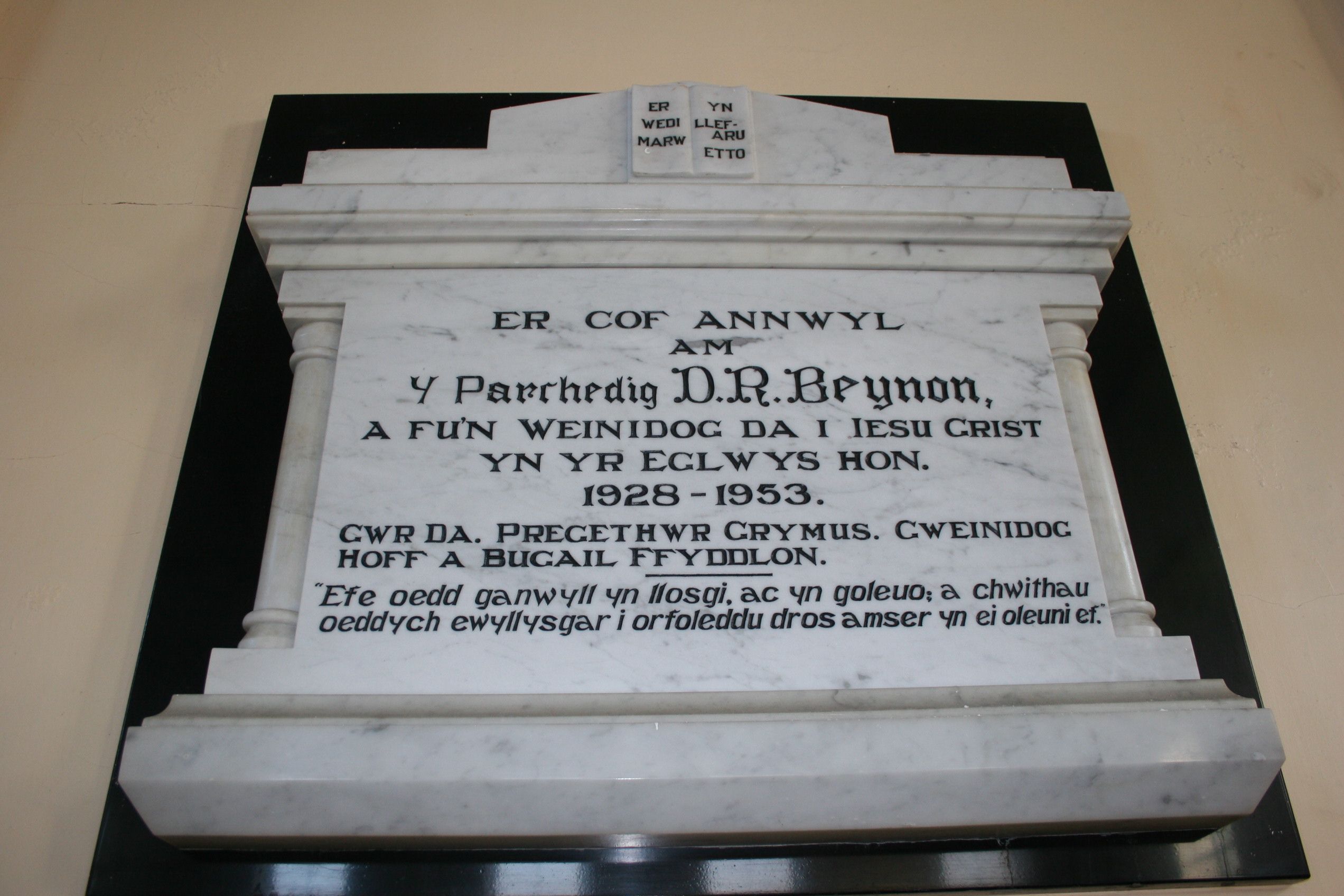
Ystalyfera - South Wales
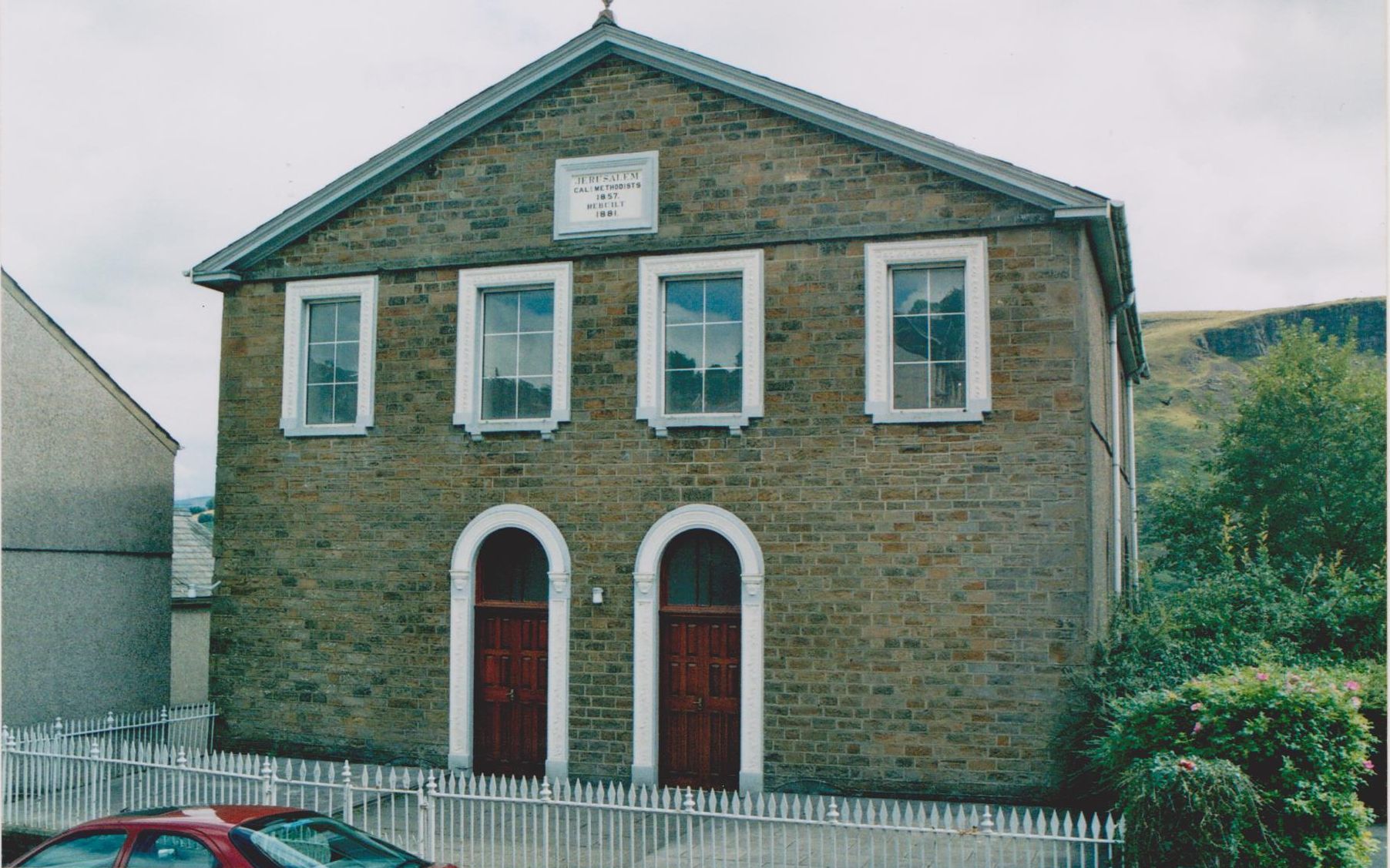 Jerusalem Chapel
Jerusalem Chapel
Email Yeargroup:
yeargroup@hotmail.co.uk
Email Wolfian Design:
webdesign@wolfianpress.com
Chapels of Ystalyfera
- Bethel Apostolic Chapel
- Caersalem Chapel
- English Congregational Church
- Gurnos Chapel
- Jerusalem Chapel
- - The War Memorials
- - Pastors of Jerusalem Chapel
- - - Rev John Jeffries
- - - Rev D W Stephens
- - - Rev D.R. Beynon
- - - Rev D.T. Davies
- - Jerusalem Chapel Centenary
- Pantteg Chapel
- Peniel Chapel, Godre'rgraig
- Seion Chapel
- Soar Chapel
- Wern Chapel
Chapels of Pontardawe Area
